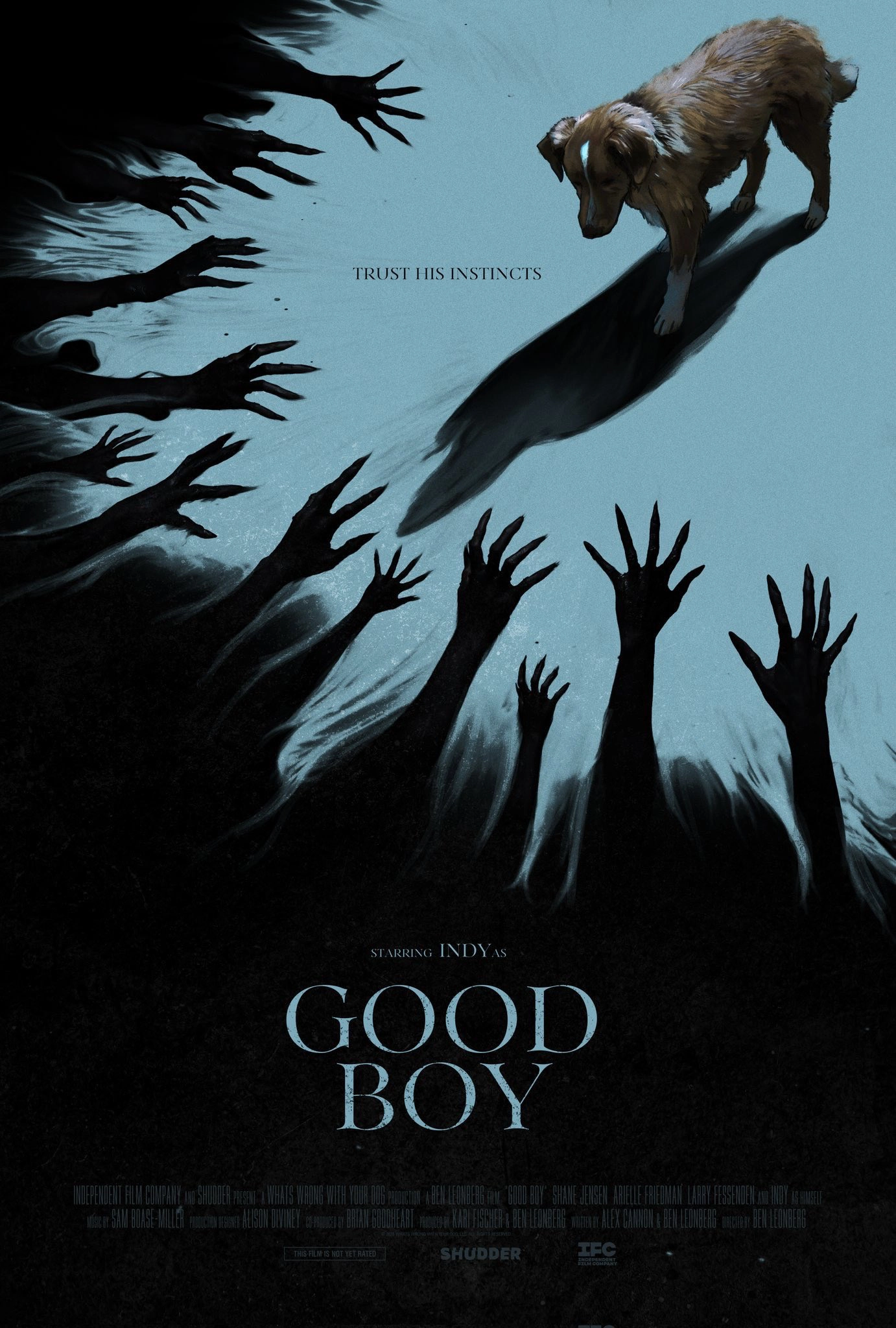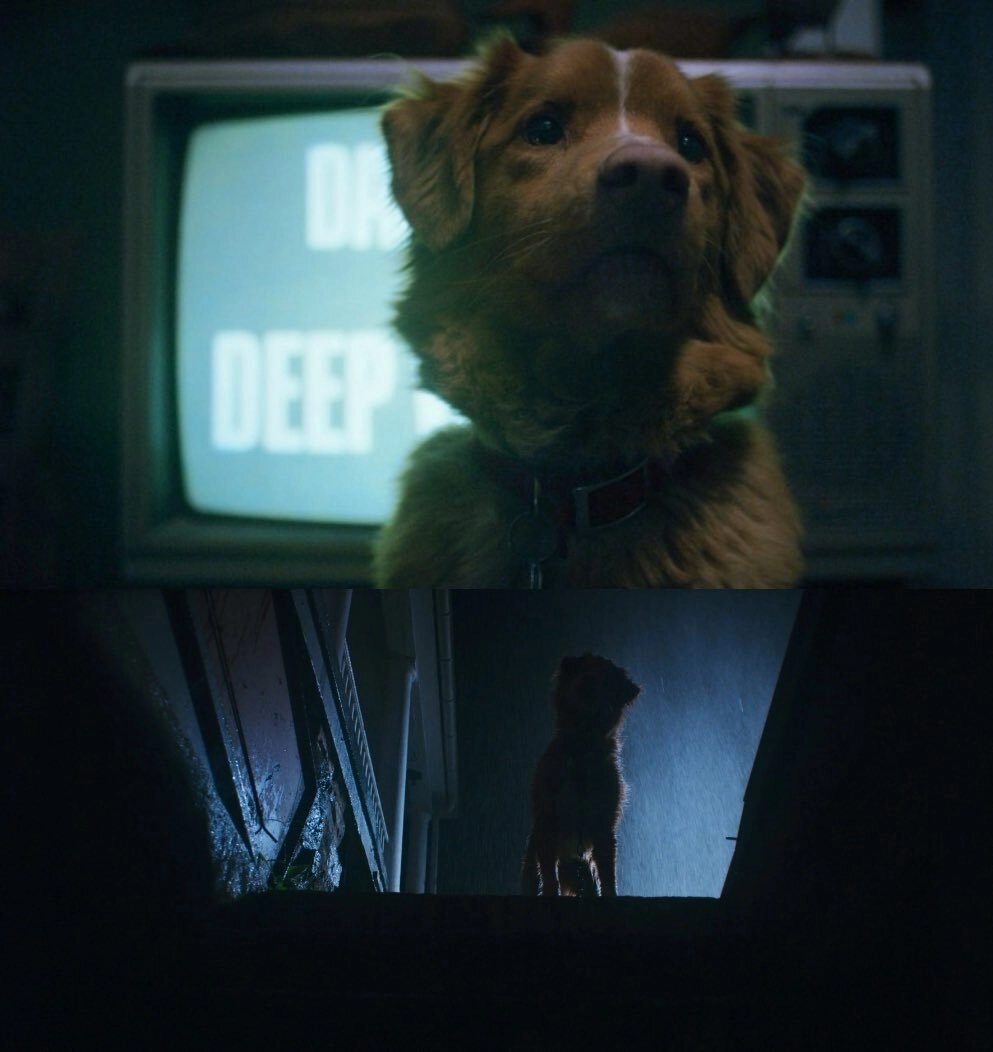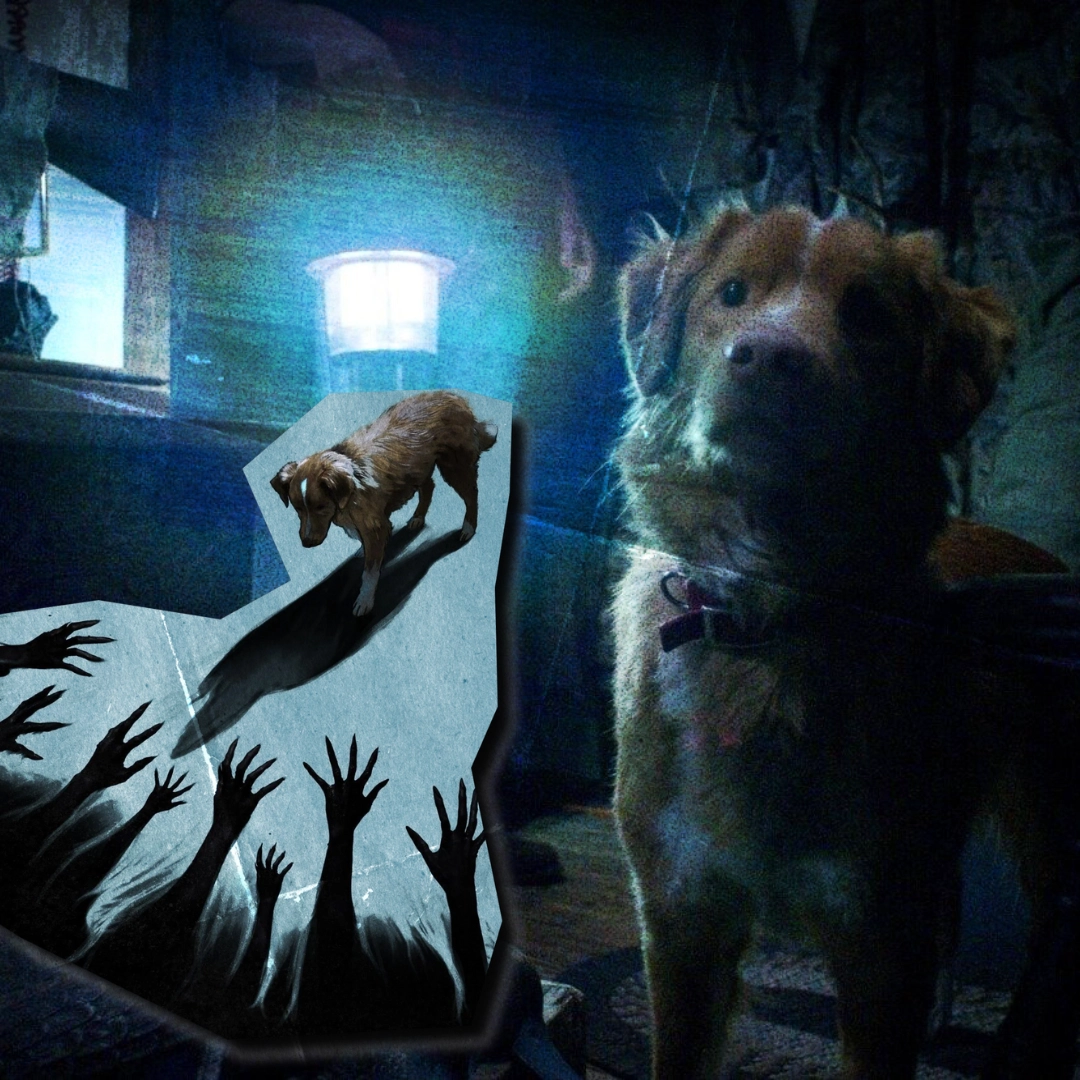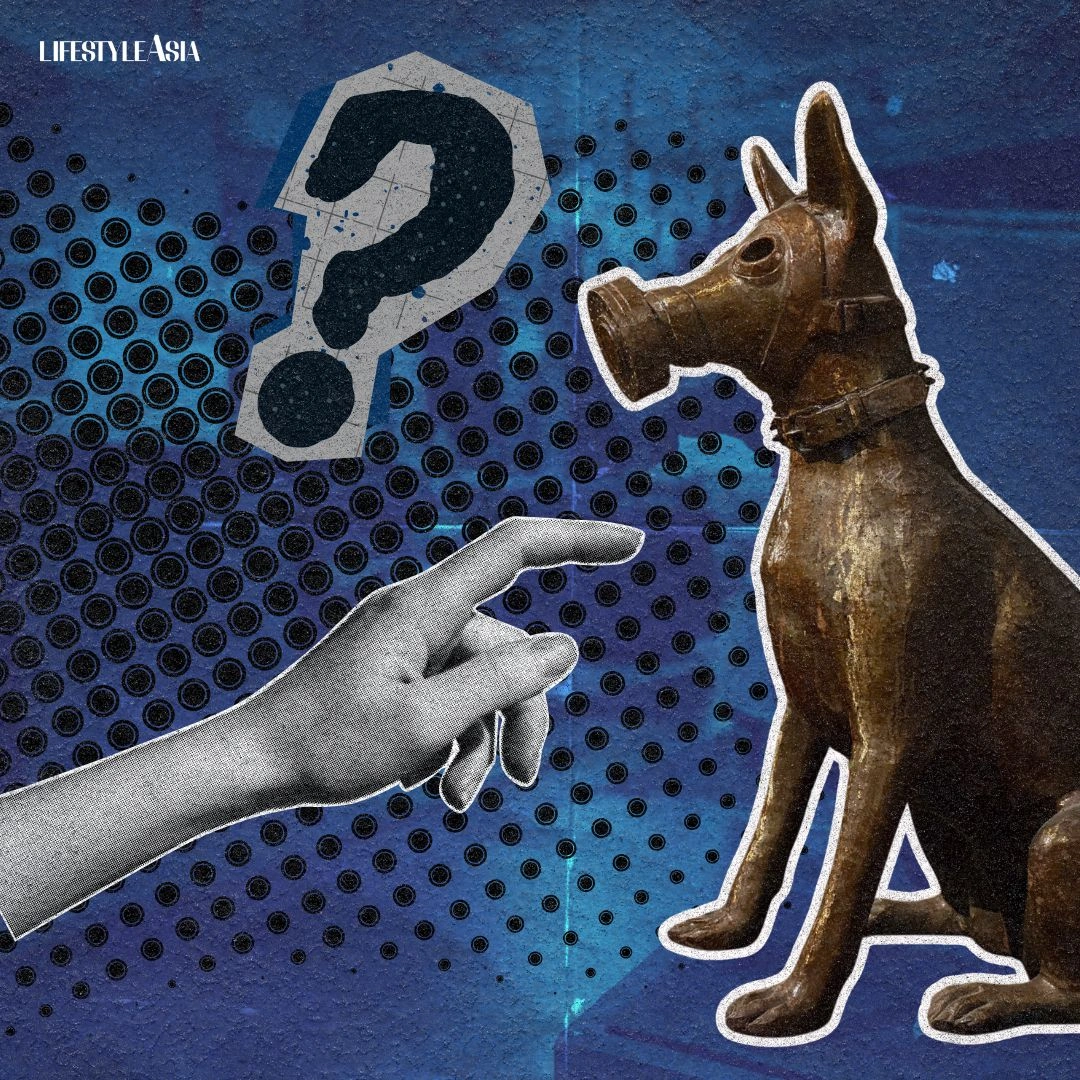This haunted house tale about man’s best friend tells a lean story, elevated by a remarkable animal performance and sharp technical choices that tap into the heart of its dread.
Warning: This piece discusses key themes and plot points of Good Boy. But in case you’re wondering: don’t worry, the dog doesn’t die.
Before I dive into my review of Good Boy, first, a story (which I promise will tie into all this): about seven years ago, on a trip to Baguio with my now nine-year-old dog, my family rented a mountainside home that turned out to be haunted. At least, that’s the conclusion we drew when my tiny terrier froze at the entrance, tense and scrunched up, staring in terror at…nothing. Just the air, the ceiling, his eyes glazed over.
Until that point, I’d never seen him so frightened. (With the innate Napoleonic complex of small dogs, you have to understand this was rare.) I carried him inside, but he refused to leave my bed the entire trip; I even had to lift him down at night just to relieve himself.
There were, of course, mysterious footsteps from the second floor. Thuds in the night. An entire wall of religious icons and crosses (far too many). My dog lay still, protective but immobilized by whatever he saw—and whatever I didn’t. I had no idea how to help him. He probably didn’t know how to help me, either. And it’s that helpless devotion, rooted in love, that fuels the dread, terror, and heart of director Ben Leonberg’s feature debut.
READ ALSO: Film Review: “One Battle After Another” Shows Paul Thomas Anderson At His Absurd, Brilliant Best
A Good Boy Keeps Watch
The premise of Good Boy is simple: its human protagonist, Todd (Shane Jensen), is plagued by an unnamed but presumably terminal illness that causes him to cough out blood, as well as bleed in strange places. He undergoes treatment and, once better, decides to permanently move into the dilapidated country home his late grandfather (Larry Fessenden) bequeathed him. Joining him and witnessing the entire ordeal is his beloved Nova Scotia Duck Tolling Retriever, Indy.

Todd’s sister, Vera (Arielle Friedman), appears briefly but remains a steady presence through phone calls, her paranoia rising as she fears her brother’s relapse. Soon, it’s revealed that the home is “cursed,” claiming the lives of most of Todd’s family. His grandfather was its latest victim, plagued by the same blood-soaked illness—watched over by his own retriever, Bandit, in a story that mirrors Todd and Indy’s.
Then come the shadowy, visceral entities that haunt the home and try to hurt its inhabitants. Indy spends much of the film fending them off in a remarkably nuanced performance that makes me wish the PATSY Awards were still a thing.
Let The Canine Shine
It’s not that the human actors didn’t do a good job of carrying the film’s emotional beats—they did. It’s just that Indy did the best job. He turned what could’ve otherwise been a gimmicky film into something earnestly ambitious. There’s no trace of CGI or technological cheats in his performance; it’s pure canine behavior and expression, which lend the supernatural elements even more credibility.

Call Indy what you will: Anthony Dogkins, Dogiel Day-Lewis, Marlon Brandog. From sidelong glances of terror to concerned stares, he delivers one of the best animal performances I’ve seen in recent years—good enough to go head-to-head with Anatomy of a Fall’s French border collie, Messi. In most moments, I nearly forgot I was watching a trained canine.

It’s no wonder filming took so long. Indy’s reactions feel authentic because he’s Leonberg’s own dog. The director rented a New Jersey home, lived there with his wife, Kari Fischer (also a producer), and made it look as “haunted” as possible. They spent not one, not two, but three whole years coaxing, filming, and waiting for Indy to make just the right moves.
Horror From A Dog’s-Eye View
A story of a dog rescuing their unsuspecting owner from malevolent forces isn’t new—Courage the Cowardly Dog could be called a spiritual predecessor. What makes Good Boy shine is the technical choices that fully commit to this project.
The film sustains a strong sense of suspense by leaning into both the unique capabilities and inherent limitations of its animal star. A dog has no opposable thumbs, no arms—so what happens when a spirit slams a door, cutting him off from his owner on the other side? What can he say when shadows loom and things go bump in the night? He can bark, but will his human take it as a warning, or dismiss it as an overreaction? The dog’s acute sense of smell also becomes a brilliant device, its sensitivity unlocking sensations and visions like a kind of third eye.

Here, canine traits amplify the helplessness that fuels horror, evoking the dread of watching a loved one tormented by forces outside their control. Thoughtful camera techniques reinforce this perspective, keeping the lens low to the ground, shifting between Indy’s point of view and measured third-person tracking shots that summon the classic feeling of being watched.
Clever visual red herrings and a masterful play of light, shadow, and sound (big kudos to the sound design team, whose work was a compelling approximation of a dog’s delicate sensory experience) also deliver some effective scares—so effective, in fact, that I found myself wishing there were more.
Simple, But Not Necessarily Simplistic
But will Good Boy give you nightmares? Not really. Its horror is quieter, more poignant. If you’re looking for The Conjuring, search elsewhere. One of the things I appreciate most about the film is this: it’s not trying to be everything all at once, or something that it’s not. I’d much rather watch a concise, 77-minute work with a simple plot than an overwrought saga that collapses under its own weight. The brevity fits, given how Good Boy began as a short that earned enough funding to expand into a feature—one that never feels like it’s overstaying its welcome.

The real terror here isn’t in the apparitions, but the inexorable crawl of death, specifically terminal illness: a force Indy cannot fully understand, but knows is threatening his owner. And that’s all that matters. Even as sickness warps Todd’s behavior—coloring it with frustration, pain, and distance—Indy refuses to leave his side.
Illness, in this case, is watching someone you love turn into a stranger. Most people would break under the weight of that. They’d leave, scream, or even lash out. But Indy isn’t most people.
In the end, the movie isn’t about ghosts or curses, but about a loyalty that endures when nothing else can. It may not be flawless, but it’s a clear passion project, brimming with a rough-edged warmth and care. Good Boy is haunted, yes—but mostly by love.
“Good Boy” is currently screening in select SM Cinemas this October 2025.





